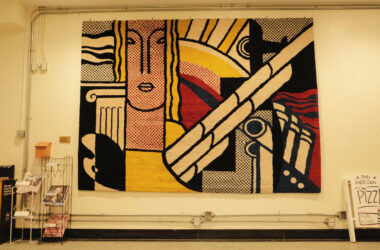Montreal street photographer Gilbert Duclos and then–17 Pascale Claude Aubry engaged in a 10-year legal battle after he photographed her in public and published the image without her consent. As a result, in April 1998, the court ruled that although such photographs could still be legally taken in the public sphere, their publication would be prohibited without the permission of the subject.
Pounding the Pavement, now showing at the McCord Stewart Museum, sets out to capture the zeitgeist of Montreal through the lens of a bygone era prior to the so-called ‘Affaire Duclos,’ when street photographers were uninhibited by the photo-rights of their subjects. The advancement in modern technology and the lag of the laws that followed created a unique few decades in which, unsuspecting of a camera flash, the urban landscape and all its inhabitants could be photographed in their most dramatic, telling, and often ridiculous forms.
Pounding the Pavement aims to present Montreal life, energy, and conflict through a variety of viewpoints, resulting in a diverse subject matter. It attempts to cast light on working class, queer, multiethnic, and Indigenous history unraveling on the city’s streets.
However, for an exhibition based on the idea that a complete image of Montreal can only ever be achieved through a multitude of viewpoints, the photographers themselves hail from remarkably homogenous backgrounds. Although it features several women and queer photographers, almost all participants are white, and a vast majority possess at least one university degree. Bruce McNeil, the key exception as the only racialized photographer featured—who specifically talks about social injustice in his work—was a McCord Steward Museum employee at the time they amassed his photographic collection. This raises questions about the level of intention behind his inclusion.
Despite its lack of diversity, Pounding the Pavement has a direct focus on the experience of Montreal’s urban working class, often living below the poverty line, an experience unlikely to be relatable to many of the degree-holding contributors to the exhibit. Their relation to the largely young, disenfranchised, or marginalized subjects is starkly similar to that of the museum guests, who pay $17 CAD to leave the bustling Sherbrooke street and wander wide-eyed through an austere, white-walled building, viewing selective projections of a conceptualized outside city. The display grapples with an idea of urban grit through a perspective that is eminently upper-class and isolated from many of Montreal’s foundational working communities.
Nevertheless, it would be a stretch to call the printed work of these majority white men photographers an entirely inaccurate artistic pursuit. There is nothing necessarily untrue about their depictions. However, they likely resonate more with many of the exhibition’s similarly-backgrounded viewers than the average Montrealer. The image—leaving behind a large portion of Montreal’s residents—is unfinished.
Pounding the Pavement never explicitly states its opinion on the ‘Affaire Duclos,’ but hints that the evolution of photo rights led to the decline of street photography—showing subjects how they desired to be seen takes away the honesty of their portrait. And truthfully, the featured images, ripped from a spur-of-the-moment intensity, appear genuinely unique to a time in which photographers had unbridled control over image rights. However, this exclusive power of storytelling is not entirely synonymous with realistic narratives, as subjects unable to consent have no power to request that a photographer capture their life as they see it.
Inclusivity goes beyond the mere formality of representing the underrepresented, and thus, a narrative of a city told only through the lens of its upper-class residents is not just unethical, but also incomplete—no matter how talented its writers are. Pounding the Pavement is a deeply creative sight that is unable to achieve its vision of capturing the innate diversity, and therefore essence, of Montreal.









